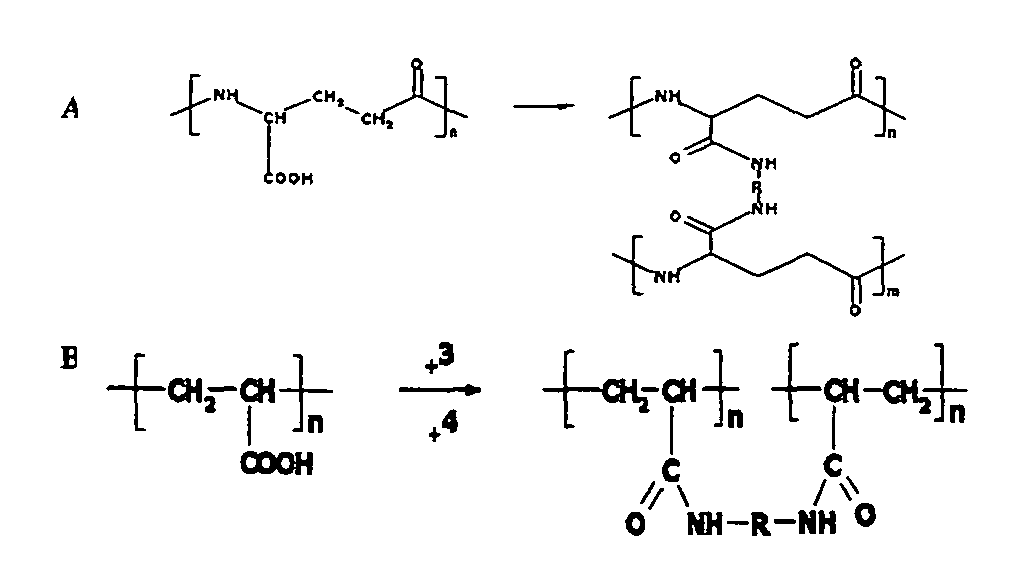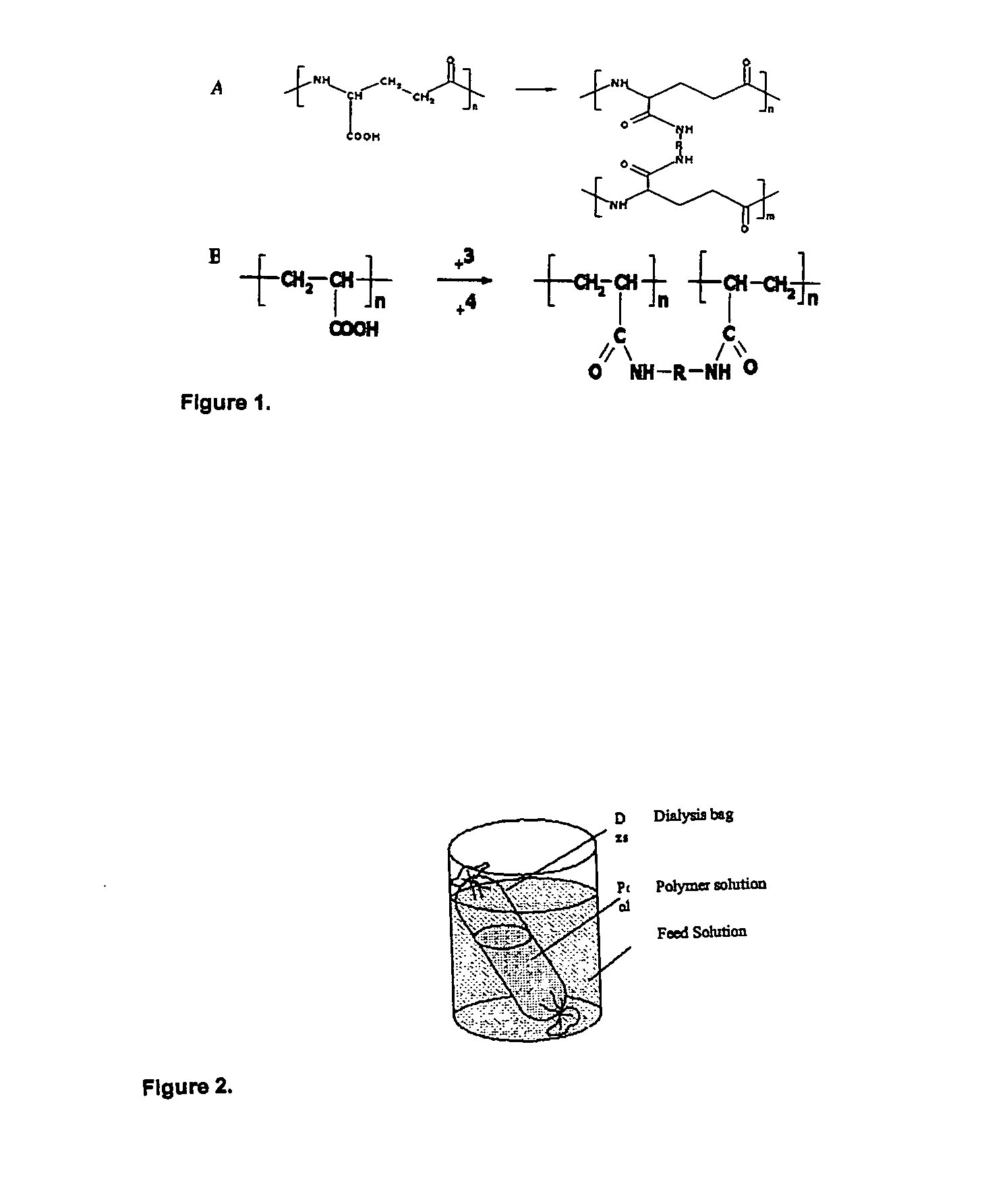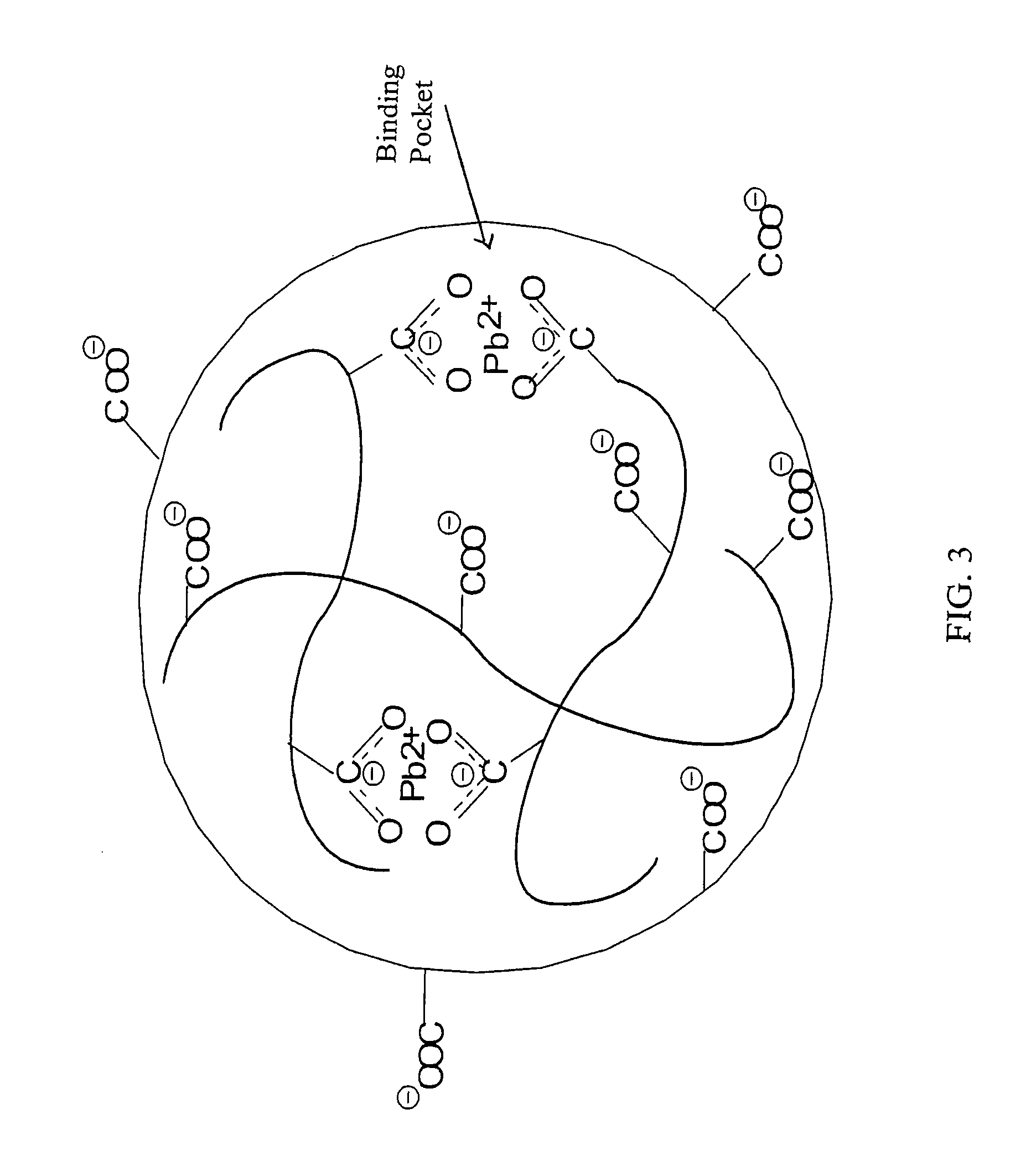Pb2+-ion binding by polyacid-based nanoparticles
a polyacid-based nanoparticle and nanoparticle technology, applied in water/sludge/sewage treatment, water contaminants, layered products, etc., can solve the problems of environmental and health problems, water consumption reduction by industry, and purification of industrial waste water
- Summary
- Abstract
- Description
- Claims
- Application Information
AI Technical Summary
Benefits of technology
Problems solved by technology
Method used
Image
Examples
example 1
Preparation of γ-PGA Solution
[0033]γ-PGA was dissolved in distilled water to produce γ-PGA solution, concentration was between 0.5 and 10 mmol. The pH was adjusted to 2.6 with HCl solution.
example 2
Nanoparticles by Complexation of γ-PGA and Lead Ions
[0034]γ-PGA solution (c=6 mmol, pH=2.6) and Pb(NO3)2 solution (c=3.125 mmol, pH=2.3) were produced and used for preparation of γ-PGA nanoparticles by lead ion complexation. 4 ml Pb(NO3)2 solution was added to the 12.5 ml γ-PGA solution dropwise. The mixture was diluted to 50 ml and the pH was adjusted to the pH=3.0 value with 0.1 M sodium hydroxide solution. The reaction mixture was stirred at room temperature.
example 3
Nanoparticles by Complexation of γ-PGA and Lead Ions
[0035]γ-PGA solution (c=6 mmol, pH=2.6) and Pb(NO3)2 solution (c=3.125 mmol, pH=2.3) were produced and used for preparation of γ-PGA nanoparticles by lead ion complexation. 4 ml Pb(NO3)2 solution was added to the 6.25 ml γ-PGA solution dropwise. The mixture was diluted to 50 ml and the pH was adjusted to the pH=7.0 value with 0.1 M sodium hydroxide solution. The reaction mixture was stirred at room temperature.
PUM
| Property | Measurement | Unit |
|---|---|---|
| diameter | aaaaa | aaaaa |
| diameter | aaaaa | aaaaa |
| molecular weight | aaaaa | aaaaa |
Abstract
Description
Claims
Application Information
 Login to View More
Login to View More - R&D
- Intellectual Property
- Life Sciences
- Materials
- Tech Scout
- Unparalleled Data Quality
- Higher Quality Content
- 60% Fewer Hallucinations
Browse by: Latest US Patents, China's latest patents, Technical Efficacy Thesaurus, Application Domain, Technology Topic, Popular Technical Reports.
© 2025 PatSnap. All rights reserved.Legal|Privacy policy|Modern Slavery Act Transparency Statement|Sitemap|About US| Contact US: help@patsnap.com



